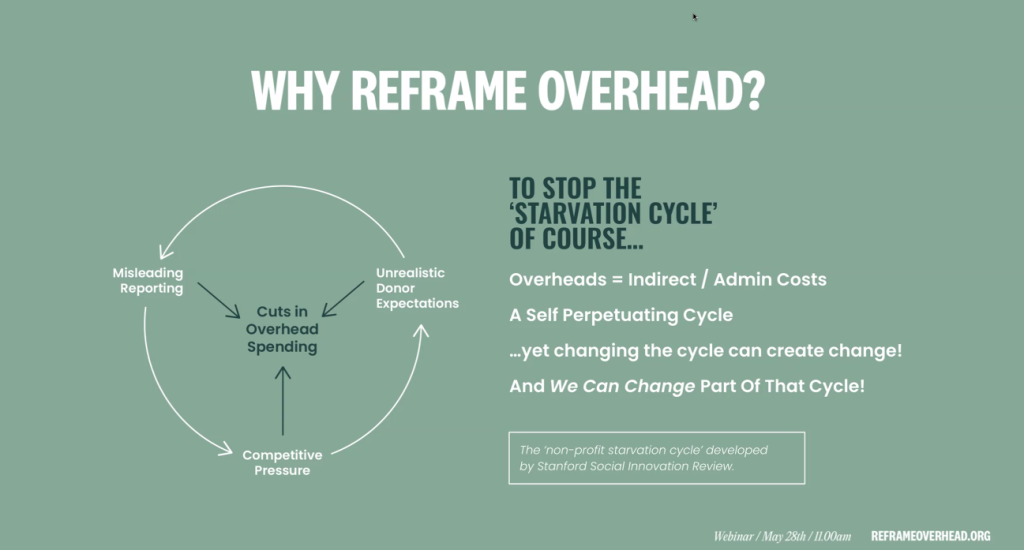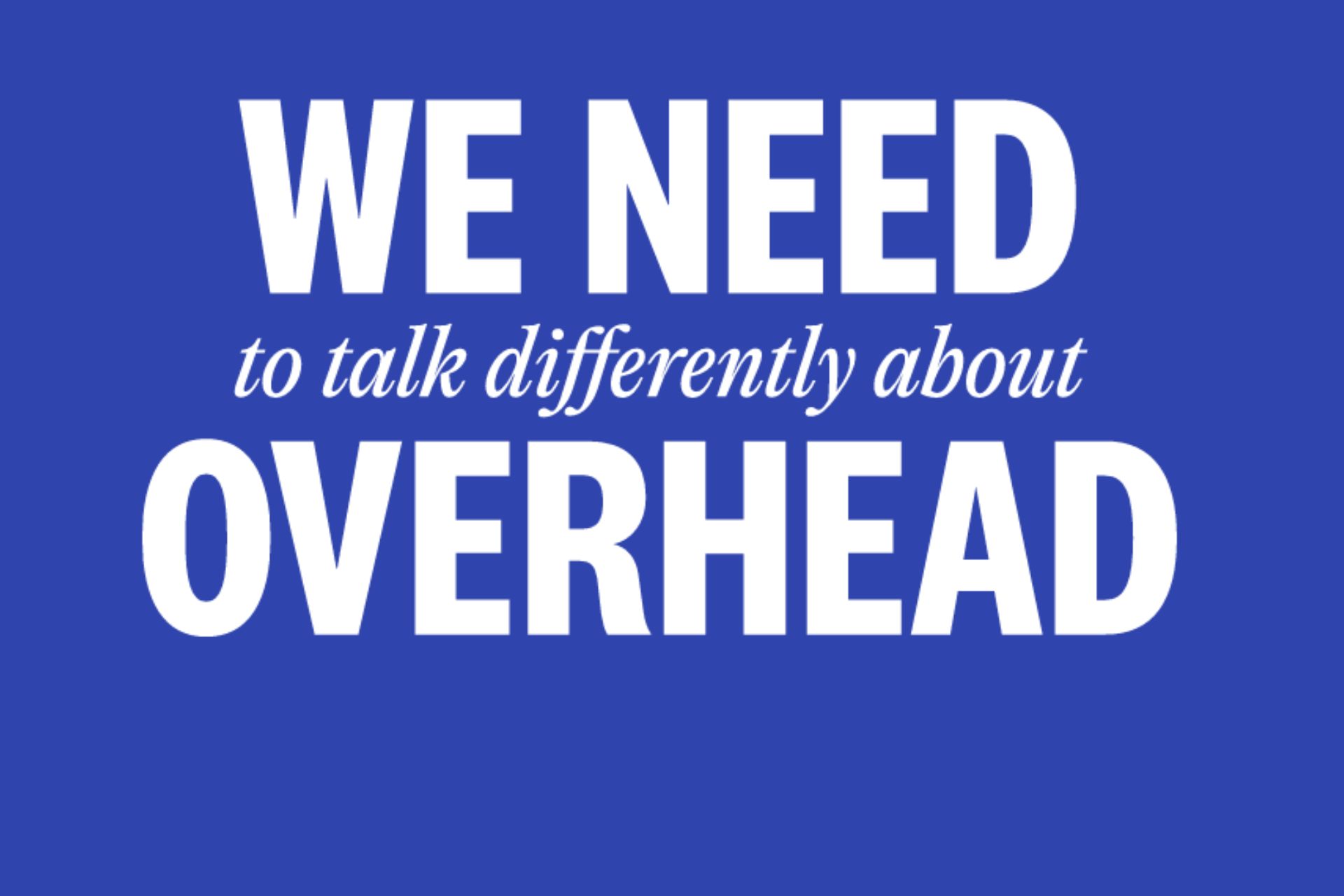Donors understand the importance of overheads when framed effectively and when we link overheads to impact. This was one of the key messages coming out of the recent Reframe Overhead Campaign webinar, The Language of Overheads. (You can watch the webinar here.)
If you are not yet familiar, the Reframe Overhead Campaign is an initiative of the Pay What It Takes (PWIT) Charity Consortium Australia. PWIT is a collection of individuals and organisations working collaboratively to address the critical challenges faced by Australian Not-For-Profits, focusing on the crucial but often underfunded area of overhead costs.
Why do we need to reframe overheads?

(Source: Centre for Social Impact and Philanthropy Australia)
This first in a series of webinars dived into some of the research coming out of the PWIT Charity Campaign Report (2024) and discussed how costs can be reframed to value overheads without negatively impacting brand trust or donations.
Our key takeaways from the presentation:
#1 – The language we use to talk about overheads matters
PWIT research found NFPs currently use limited language in how they tell the story of overhead. As fundraisers, we need to stop using broad and unclear phrases to describe overhead costs (e.g. don’t assume someone outside the sector knows what capacity building is) and start framing overhead with clear, descriptive and authoritative language – donors will be more receptive to this language.
Top 5 lowest terms rated by donors:
- Capacity Building
- Infrastructure
- Innovation
- Organisational Capacity
- Administration
Top 5 highest rates terms by donors:
- Accountability
- Organisational Effectiveness
- Governance
- Fundraising
- Sustainability
#2 – The majority of donors feel fundraising is important or very important to a charity achieving impact
… yet for-purpose organisations do not report consistently or extensively on fundraising externally. When demonstrating the impact of fundraising, donors respond much more favourably to an income cost ratio (i.e. When you donate $1 a charity is then able to raise $3) versus a cost income ratio (i.e. For every $1 you donate, 31% goes on the cost of fundraising).
The use of a ‘fundraising multiplier’ is one of the ways we can reframe how we talk about the impact of investing in this overhead i.e. For every $1 invested into fundraising, we raised $4.32 to invest in research, prevention and support programs for South Australians impacted by cancer (Cancer Council SA, 2021/22 Impact Report)
#3 – Visuals communicating how funds are distributed build trust with donors
Donors find for-purpose organisations more trustworthy when they display visuals, especially when they demonstrate complexity and multiple datasets. The campaign is encouraging fundraisers to experiment and try new ways to visualise how costs are linked to investment and impact. See the PWIT Charity Campaign Report (2024) for examples of this.
To reframe overhead, collective action is required. If you haven’t already signed up to the pledge, we strongly encourage you to join us. You can request to join their private LinkedIn group.
The next Reframe Overhead webinar will cover ‘How to have conversations with potential detractors in your organisation’ – an important topic and a conversation we very much look forward to being a part of.
